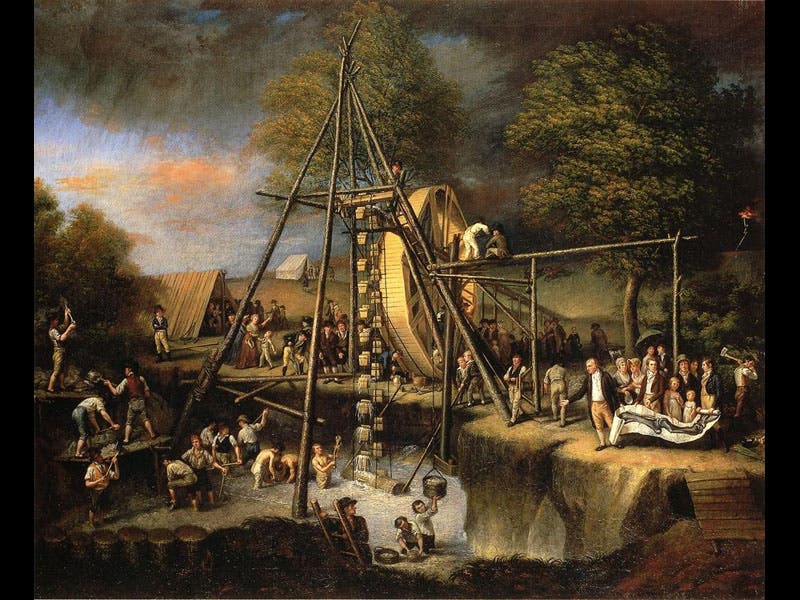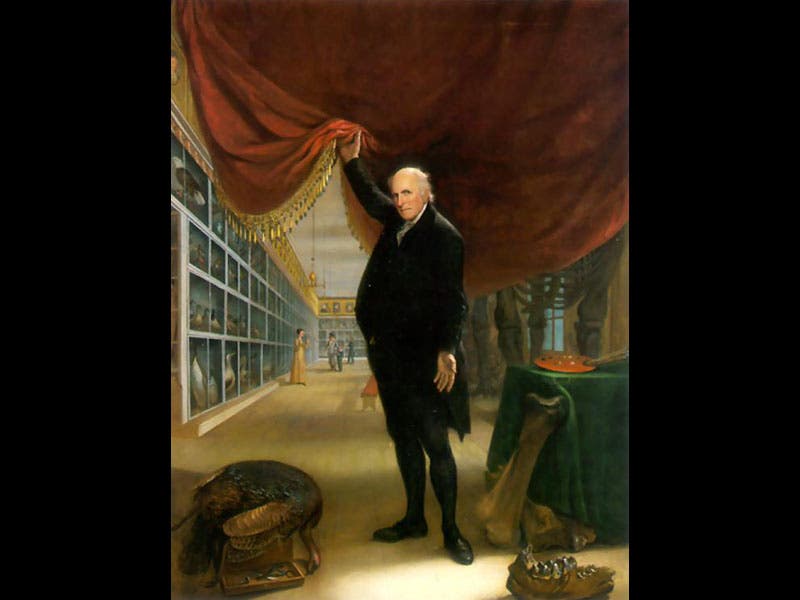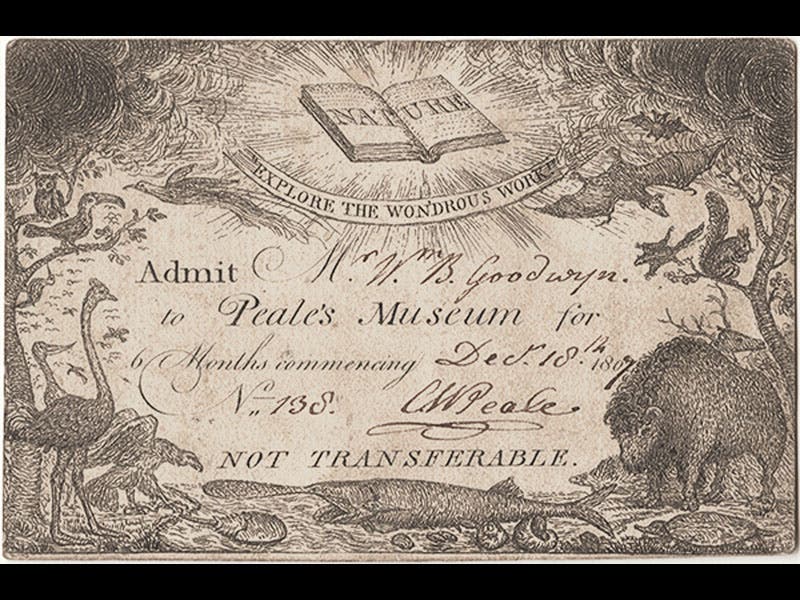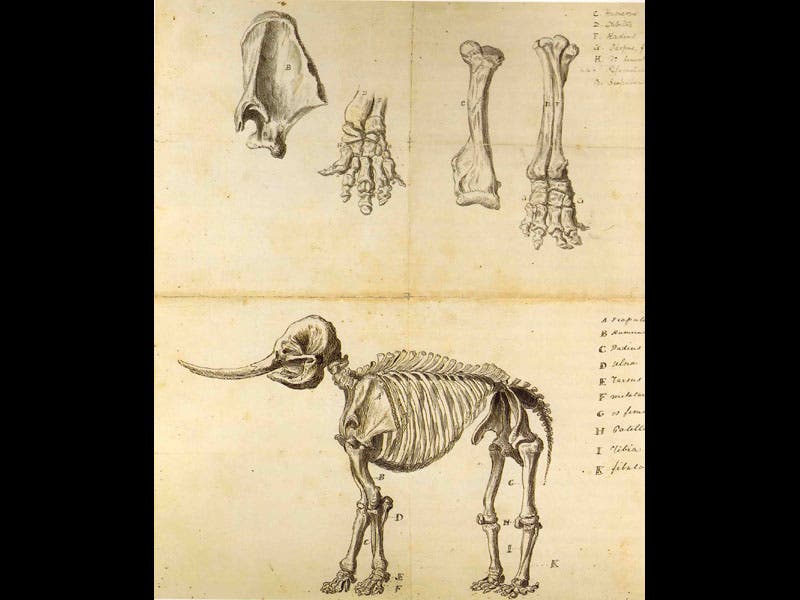Scientist of the Day - Charles Willson Peale
Charles Willson Peale, an American painter, died Feb. 22, 1827, at the age of 85. Around 1776, he moved to Philadelphia and set up a studio, where he painted portraits of, among others, Thomas Jefferson and George Washington. But he also collected natural objects, and in 1786, he opened a museum, Peale’s Museum, on Independence Square in Philadelphia. It was the first public museum in the United States. You can get a glimpse of its contents in this self-portrait of Peale, painted in 1822 (second image above). Several original admission tickets to the Museum, signed by Peale, survive (third image).
In 1801, Peale unearthed a complete mastodon skeleton (plus ¾ of another) in upstate New York; when reassembled, the complete mastodon became the centerpiece of his museum (you can see it at the right of his self-portrait, behind the curtain). Peale commemorated his mammoth discovery with a painting, The Exhumation of the Mastodon (1806), which for a long time was in the other Peale Museum, in Baltimore, but whose collections have now been transferred to the Maryland Historical Society (first image). In the painting, note the sizable family on the right bank holding a drawing of mastodon bones; that is the Peale family, with Charles at the left. Three of the young men shown were also artists--as if they had a choice, because their father had named them Rembrandt, Rubens, and Raphaelle. A fourth, Titian, had died in 1798. Rembrandt’s sketch of the assembled mastodon can be seen above (fourth image).
Many of the Peale Museum specimens came from the Lewis and Clark expedition of 1804-06. Peale painted handsome portraits of the two leaders, Meriwether Lewis in 1807 (fifth image), and William Clark in 1810 (sixth image). Both portraits are in Independence National Historical Park in Philadelphia.
Dr. William B. Ashworth, Jr., Consultant for the History of Science, Linda Hall Library and Associate Professor, Department of History, University of Missouri-Kansas City. Comments or corrections are welcome; please direct to ashworthw@umkc.edu.












